Trek Madone Race Shop Ltd (video) review
The Trek Madone Race Shop Ltd frame is the highest spec offered by Trek and is fabricated from 700 Series OCLV carbon – which Trek claims is the lightest and the strongest in the cycling world
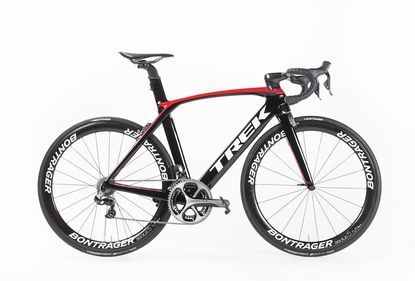
The Trek Madone and Venge ViAS are very close aerodynamically. Although we did repeat runs the results are so close they are potentially within the realm of experimental error, with both bikes representing the fastest available. The Madone has drool-inducing looks, class-leading aerodynamics and is also comfortable thanks to the IsoSpeed decoupler. It is also impressively light for such an aero design. If I could race on any road bike, the Trek Madone would be it.
-
+
Very aero
-
+
Clever design features
-
+
Comfortable
-
+
Looks
-
+
Great spec
-
+
Custom options offered
- +
-
-
If you want the best, it's going to cost a lot
-
-
Zac Efron has one
You can trust Cycling Weekly.
As soon as the Trek Madone was unveiled, existing aero bike designs with external cables flapping in the wind instantly looked antiquated.
We have previously reviewed the Trek Madone 9.9 in the H2 geometry, which is more relaxed, but here we present the higher-spec Trek Madone Race Shop Ltd. The bike is the same as used by Trek-Segafredo and features higher-grade carbon-fibre and a more aggressive geometry.
>>> Best aero bikes: a buyer's guide

Frame
The Trek Madone might have had controversial origins with its name coming from Lance Armstrong’s favourite training climb, but don't let that put you off.
The Race Shop Ltd frame is the highest spec offered by Trek and is fabricated from 700 Series OCLV carbon – which Trek claims is the lightest and the strongest in the cycling world.
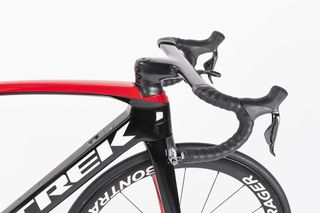
While I haven’t performed quantitative stiffness to weight tests, the Madone certainly feels very stiff, while also being impressively light.
Changing to SRAM Red and tubs would no doubt lead towards a sub UCI 6.8kg build. A key difference to the lower spec models is the geometry with the Race Shop Ltd available in Trek's aggressive H1 geometry. This translates to a longer top tube and shorter head tube than the more relaxed H2 fit.
Video - Bauke Mollema tells us about his Trek Madone and Trek Emonda
There are loads of neat details such as a port in the down tube to allow easy access to the junction box and the Vector wings that help keep the front brake integrated.
Aside from the heavy integration and hidden cables, the key frame detail is the IsoSpeed Decoupler on the seatpost. Similar to that found on the cobble-conquering Domane, this feature offers great levels of compliance and comfort without compromising bottom bracket stiffness.

How easy is it to work on?
To find out, I took it apart. I switched the brakes from Euro to 'moto' style and also changed the handlebar and stem for a size I preferred.
Trek's manual for the bike is very thorough and well set out, meaning that if you follow the instructions, things work well.
Changing the handlebars and routing the cables is no less or more difficult than that on an aero bike with external head tube cables, such as the Canyon Aeroad or Cervélo S5.
On bikes like the S5 and Aeroad, you still route cables internally through the aero handlebar and frame. The only difference is that they enter the frame externally on the head tube rather than through the top of the head tube such as on the Madone.
Cruicial to this working is Trek's clever design of the integrated stem and head tube spacers which are all split, meaning they can be removed or added without having to undo cables – a design flaw found on the Cervélo P5 TT bike.
I think it's an easy and therefore lazy criticism to label the Trek Madone as impractical and hard to work on compared to other bikes with internally routed cables on the handlebar and frame. Let's face it, most bikes have internally routed cables now.

The brakes have impressed me too.
In terms of power and stiffness Shimano Dura-Ace are still top of the pile for me, but Trek's integrated brakes are very good and, crucially, easy to adjust.
Changing cables is much easier than you might think too. The brake cable outers route internally through the frame, meaning that when you come to change the cable, the outer is there as a guide.
Other bikes typically use a small section of outer once the cable exits the frame. This helps reduce some weight, but thanks to the high spec OCLV 700 carbon, the Madone is in no need of a diet.
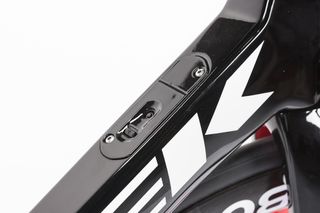
Specification*
It’s top-end bits here. I really rate the Bontrager wheels. I haven’t aero tested them individually, but they feel right up there with the likes of Zipp and ENVE as the fastest and most stable wheels on the market. Furthermore, they are wide and tubeless ready.
Dura-Ace Di2 provides faultless shifting and Trek's proprietary components are all very high quality.
If you opt for a Project One build, you can specify whatever spec you want, too, meaning you can change the wheel depth, groupset, saddle, bars and even the paint.
Riding
The Madone is a joy to ride. Handling is neutral; I much prefer the feel of the H1 geometry over the H2 on lower-spec machines. To do the aerodynamics justice, I feel like I need to be in an aggressive, low position and I can only achieve this with the lower head tube and longer toptube of the H1 geometry.
It would appear that to get the Madone in H1 geometry you have to purchase either this top-spec model, or have a Project One bike, Project One being Trek's custom spec configuration. This is a shame if you would like to purchase one of the more affordable models and want the H1 geometry.

On the road the bike tracks perfectly in corners and feels very slippery through the air. Aero testing suggested it was slightly faster than the Specialised Venge ViAS too, although very close.
However, at almost a kilo lighter, the Madone outclasses the Venge when accelerating up steep climbs and the IsoSpeed Decoupler offers far superior compliance.
Heavy integration makes the bike tricky to work on meaning you will either have to befriend a mechanic or be competent yourself. That said, as I have previously mentioned, it's not impossible and this bike is so good to ride and so fast, you won’t mind.
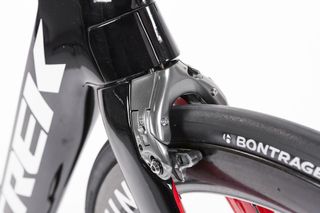
Value
Ownership of this bike is probably directly proportional to bank robberies – it ain’t cheap. However, it’s ridiculously fast, light, stiff and comfortable.
Buy now at Evans Cycles for £11,500
The Canyon Aeroad offers superior value, but the Trek Madone is right up there at the pinnacle of road bike design. I would like to see a power meter included for the price though.
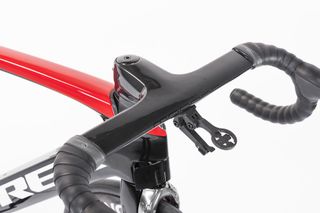
*Note For 2017 the spec remains largely the same, apart from the groupset, which is now the updated Shimano Dura-Ace Di2

Thank you for reading 20 articles this month* Join now for unlimited access
Enjoy your first month for just £1 / $1 / €1
*Read 5 free articles per month without a subscription

Join now for unlimited access
Try first month for just £1 / $1 / €1
Get The Leadout Newsletter
The latest race content, interviews, features, reviews and expert buying guides, direct to your inbox!
Oliver Bridgewood - no, Doctor Oliver Bridgewood - is a PhD Chemist who discovered a love of cycling. He enjoys racing time trials, hill climbs, road races and criteriums. During his time at Cycling Weekly, he worked predominantly within the tech team, also utilising his science background to produce insightful fitness articles, before moving to an entirely video-focused role heading up the Cycling Weekly YouTube channel, where his feature-length documentary 'Project 49' was his crowning glory.
-
 Tweets of the week: Pogačar can be beaten, Pidcock meets the royals, and Remco's an Arsenal fan
Tweets of the week: Pogačar can be beaten, Pidcock meets the royals, and Remco's an Arsenal fanSadly for Tadej Pogačar, serial winning doesn't seem to apply to go karting
By Tom Davidson Published
-
 Remco Evenepoel goes on first outdoor ride since horror crash, hints at Tour de France on Strava
Remco Evenepoel goes on first outdoor ride since horror crash, hints at Tour de France on Strava'On my way back' says the Belgian, as he builds back up to Tour de France form with almost-100km ride
By James Shrubsall Published
-
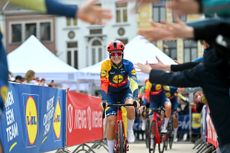 Four weeks after breaking arm, Lizzie Deignan set to start La Vuelta Femenina
Four weeks after breaking arm, Lizzie Deignan set to start La Vuelta FemeninaBritish rider to line up at eight-stage race on Sunday, less than a month on from crash at Tour of Flanders
By Adam Becket Published